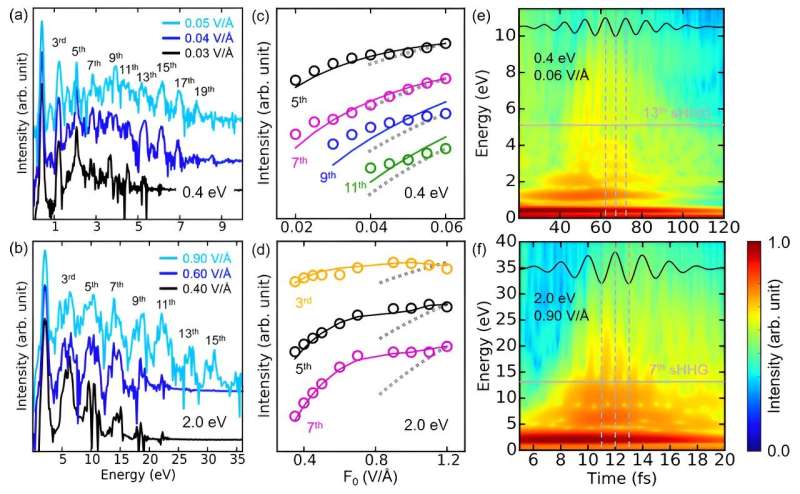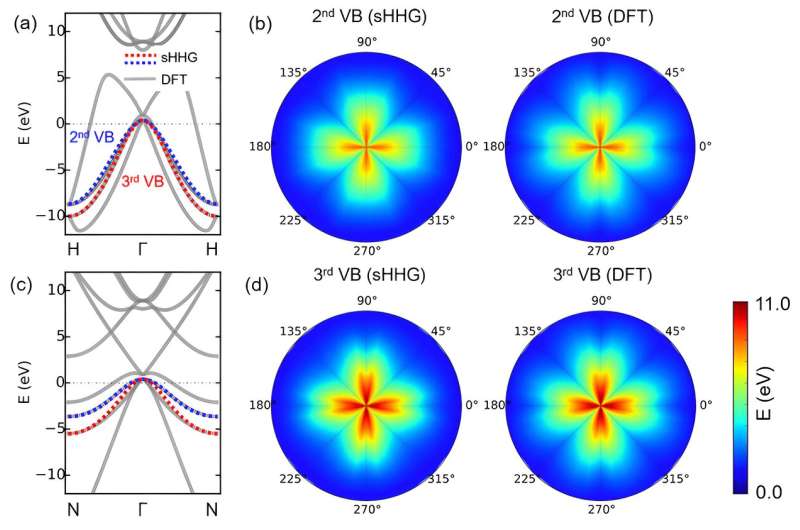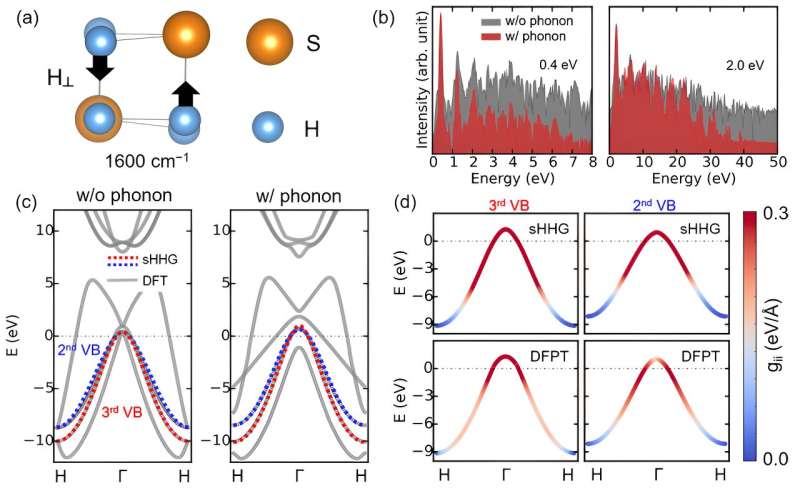The HHG spectra in high-pressure superconductor H3S. Credit: Institute of Physics
High pressure has revealed surprising physics and created novel states in condensed matter. Exciting examples include near room temperature superconductivity (Tc > 200 K) in high-pressure hydrides such as H3S and LaH10.
Although the superconducting transition temperature of high-pressure superconductors is constantly increasing, the mechanism of superconductivity at such high pressures remains an open question. Knowledge of the properties and ultrafast dynamics of electrons and quasiparticles in high-pressure quantum states is lacking.
High harmonic generation (HHG) is the up-conversion of laser light to radiation carried at multiples of the laser frequency. HHG in solids originates from the nonlinear driving of electrons within and between electronic bands by strong field light-matter interactions. Therefore, HHG spectroscopy naturally contains fingerprints of intrinsic atomic and electronic properties of materials. There is a great deal of excitement in learning about material properties through this nonlinear, non-perturbative laser-matter interaction.
Using state-of-the-art first-principles time-dependent density-functional theory simulations, Prof. Meng Sheng's group from the Institute of Physics of the Chinese Academy of Sciences has studied the ultrafast HHG dynamics in the high-pressure superconductor H3S.
-
Band structure reconstruction via HHG spectra. Credit: Institute of Physics
-
Electron-phonon coupling reconstruction via HHG spectra. Credit: Institute of Physics
The researchers found that HHG in high-pressure superconductors is strongly dependent on the electronic structures and electron-phonon coupling (EPC). The study, titled "Solid-state high harmonic spectroscopy for all-optical band structure probing of high-pressure quantum states," is published in PNAS.
Using HHG spectroscopy, they retrieved the band dispersion and EPC, and revealed the significant influence of the many-body EPC on the electron behavior near the Fermi level.
Their results support the phonon-mediated mechanism based on the EPC of high-pressure superconductivity, providing an all-optical approach to probe the band dispersion and EPC of high-pressure quantum states.
More information: Shi-Qi Hu et al, Solid-state high harmonic spectroscopy for all-optical band structure probing of high-pressure quantum states, Proceedings of the National Academy of Sciences (2024). DOI: 10.1073/pnas.2316775121
Journal information: Proceedings of the National Academy of Sciences
Provided by Chinese Academy of Sciences


























